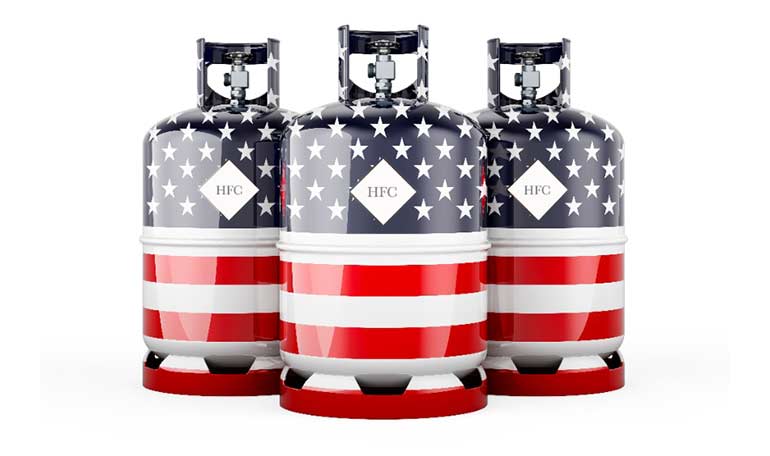USA takes first big step to cut HFCs
7th October 2023
USA: The USA has announced measures that will limit new air conditioners and heat pumps to refrigerants with a GWP of 700 and supermarket systems to a GWP of 150.
Just a day after agreement was reached for a revision of the European F-gas regulations, the US Environmental Protection Agency (EPA) announced two regulations desigend to curb the use and emissions of HFC refrigerants in the USA.
The first new action is a final rule to accelerate the transition to more efficient and climate-safe technologies in new refrigeration, heating and cooling systems and other products by restricting the use of HFCs where alternatives are already available. The second action is a proposed rule to better manage and reuse existing HFCs, including by reducing wasteful leaks from equipment and supporting a growing American industry for HFC recycling and reclamation.
The new rules are brought in under the bipartisan American Innovation and Manufacturing (AIM) Act, which seeks to achieve an 85% cut in the supply of HFCs by 2036.
The contents of the EPA’s 433-page technology transitions rule includes a GWP limit of 700 for residential and light commercial air conditioning and heat pumps. This will apply to the manufacture and import of self-contained products from 1 January 2025 with restrictions on the sale, distribution and export from January 1, 2028. For the installation of “field-assembled” systems the ban begins on 1 January 2025, with the exception of VRF systems, which have a compliance date of 1 January 2026.
As far as HFCs are concerned, the 700 GWP will allow the use of A2L refrigerants, such as R32 (GWP 675) and the blend refrigerant R454B (GWP 466), but will finally rule out Honeywell’s much-vaunted, but yet to come to market, non-flammable alternative R466A due to its GWP of 733.
The EPA anticipates that States will adopt the new 2021 building codes or revise their regulations to allow for use of several SNAP-listed lower-GWP A2L refrigerants by 2025.
Refrigeration
The EPA proposed a 150 GWP limit across retail food refrigeration, with exceptions for remote condensing units and supermarket systems with refrigerant charge capacities greater than or equal to 200lb, and for the high temperature side of these subsectors’ cascade systems, where a 300 GWP limit would apply. There are also exceptions for some refrigerated food processing and dispensing equipment covered by UL Standard 621 and for equipment with charge sizes greater than 500g, where the EPA is not finalising a GWP limit, but rather prohibiting the use of certain refrigerants.
For refrigerated food processing and dispensing equipment not covered by UL 621 and with charge sizes less than or equal to 500g, the 150 GWP limit applies.
For stand-alone units the compliance date is 1 January 2025; for remote condensing units, it is 1 January 1, 2026; for supermarket systems, it is January 1, 2027.
The EPA has set different compliance dates for refrigerated food processing and dispensing equipment, depending on the specific equipment. It is 1 January 2028, for equipment within the scope of UL 621; 1 January 2026 for other refrigerated food processing and dispensing equipment with charge sizes of 500g or less; and 1 January 2027, for other refrigerated food processing and dispensing equipment with charge sizes greater than 500g.
Proposed rule
The EPA’s proposed HFC management rule includes proposals for reducing leaks and increasing end of life recovery and reuse of reclaimed refrigerants. It expands and enhances the requirements for reducing leaks, bringing a range of smaller equipment containing more than 15lb of HFC refrigerants under the leak repair and reporting requirements.
It also contains proposals for tracking refrigerant cylinders and requiring the use of 100% reclaimed refrigerant in most new appliances and systems still containing HFCs beginning in 2028.
Describing the actions as “a big step closer toward a climate-friendly future”, Christina Starr, senior manager of the US-based Environmental Investigation Agency, said: “This will spur innovations to how cooling equipment is designed, and how the entire US industry and workforce tracks and handles refrigerants. It also incentivises companies to take a truly cradle-to-grave approach in setting and meeting their climate targets.”







